
A wonderful, thought-provoking book by Dick Couch and a quick study of human personalities; his conclusions are optimistic and uplifting.
Vice Admiral Jantes Stockdale (USN, Ret.), recipient of the Congressional Medal of Honor
The Warrior Elite offers superb insight into the making of a Navy SEAL.
Robert J. Natter, Admiral, U.S. Navy, Commander in Chief, U.S. Atlantic Fleet
The Warrior Elite is a very accurate and authoritative look at basic SEAL training. A must-read for any young man who wants to become a Navy SEAL.
Rudy Boesch, MCPO (USN, Ret.), B UD/S Class 6, and Survivor contestant
An authentic voice that spells out what it takes to become a SEALthe sheer grit to overcome all obstacles. America is lucky that it continues to attract such men as these to serve.
Theodore Roosevelt IV, BUD/S Class 36
A story written of men's souls and the passion of deep personal challenge an illuminating description of human endeavor. Dick Couch has delivered the best accounting yet of the extraordinary young men I was so privileged to lead.
Rear Admiral Ray Smith (USN, Ret.), BUD/S Class 54, and former commander, Naval Special Warfare Command

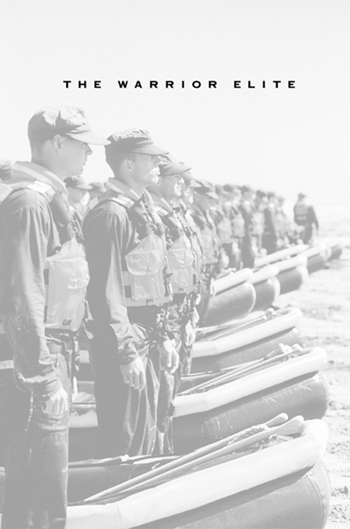

To
Mike Doc Thomas
1934-1999
Whiskey Platoon, SEAL Team One, 1970-1971
BUD/S Instructor, 1967-1969
Doc was our platoon corpsman; I was his platoon officer. We went to Vietnam together and we all came home together. Doc has gone on ahead; he now walks point for the old warriors in Whiskey Platoon. This book is for Doc and for all those young men who enter BUD/S training with the dream of becoming a SEAL warrior.
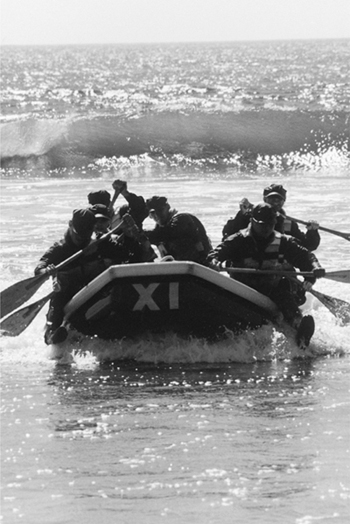
A CKNOWLEDGMENTS

 he focus of this book is the training of Navy SEALs, America's elite maritime warriors. This work is based on my interviews with Basic UDT/SEAL (BUD/S) trainees, BUD/S instructors, students and instructors in various advanced SEAL training programs, and SEALs preparing for operational deployment. With two exceptions, the names have not been changed; the men you will meet in The Warrior Elite are Navy SEALs, SEAL trainees, and SEAL training cadres. I was given full and unlimited access to the BUD/S and advanced training venues, and could speak freely with trainees and trainers alike. My only restriction was that I respect classified information and organizations. As a retired naval officer who held a top-secret clearance, I could not do otherwise. SEAL training and the forging of warriors is a dynamic business. Because SEALs continually try to find better ways to do things, SEAL training is a work in progress. The Warrior Elite represents SEAL training at BUD/S and in the teams during the fall of 1999 and early 2000.
he focus of this book is the training of Navy SEALs, America's elite maritime warriors. This work is based on my interviews with Basic UDT/SEAL (BUD/S) trainees, BUD/S instructors, students and instructors in various advanced SEAL training programs, and SEALs preparing for operational deployment. With two exceptions, the names have not been changed; the men you will meet in The Warrior Elite are Navy SEALs, SEAL trainees, and SEAL training cadres. I was given full and unlimited access to the BUD/S and advanced training venues, and could speak freely with trainees and trainers alike. My only restriction was that I respect classified information and organizations. As a retired naval officer who held a top-secret clearance, I could not do otherwise. SEAL training and the forging of warriors is a dynamic business. Because SEALs continually try to find better ways to do things, SEAL training is a work in progress. The Warrior Elite represents SEAL training at BUD/S and in the teams during the fall of 1999 and early 2000.
I wish to thank all those in the Naval Special Warfare chain of command who gave their consent to, and cooperation in, the writing of this book. BUD/S training, the advanced training regimens, and the SEAL and SDV teams are a closed society. Reporters and TV journalists are occasionally allowed in, but they are politely shown only certain orchestrated events; the culture of the teams and their special brand of warrior training are kept well away from the public eye. I was allowed to see it all, even though I was technically an outsidera guy in civilian clothes with a notebook. I may be an alumnus, but I am no longer an active warrior. SEAL training is dangerous, so I had to be supervised and accounted for. Therefore, I am particularly indebted to the BUD/S instructors and the advanced training cadres for graciously allowing me to roam so freely on their turf.
I want to thank Bob Mecoy, my editor at Crown, who came to me with the idea for this book. To Pete Fornatale at Crown, who picked up the load when Bob left, you did a great job. I also want to thank my wife, Julia, who patiently proofread my work and helped me through my second Hell Week. And thanks to my collaborator and photographer, Cliff Hollenbeck, who taught me that good pictures are as hard to produce as good words. For those officers and men in the Naval Special Warfare community who trusted me with your story, I can never thank you enough.
C ONTENTS
CHAPTER ONE:
CHAPTER TWO:
CHAPTER THREE:
CHAPTER FOUR:
CHAPTER FIVE:
CHAPTER SIX:
CHAPTER SEVEN:
EPILOGUE:

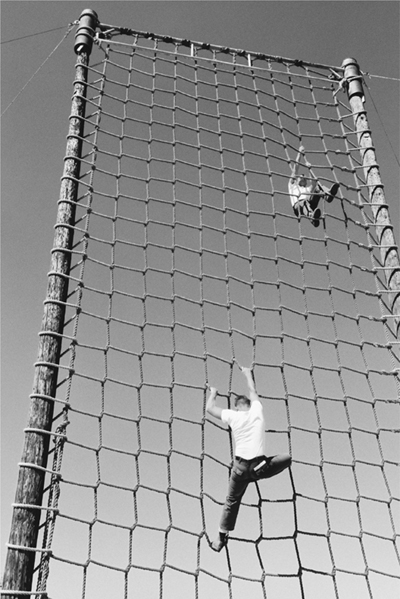
I NTRODUCTION
 ach year, U.S. military boot camps turn out tens of thousands of soldiers, sailors, and airmen. The Marine Corps builds about 20,000 new marines each year for their 174,000-man Force, and they do this remarkably well in only eleven weeks. In the U.S. Army special operations community, the ultimate gut check is Ranger School. This eight-week ordeal teaches young soldiers that they can fight and lead, even when they haven't eaten or slept for several days. The Army awards about 1,500 Ranger Tabs each year to these graduates. Ranger School is tough; a few graduates of Basic Underwater Demolition/SEAL training, or BUD/S, attend Ranger School each year to learn what the Army teaches. BUD/S, however, remains at the core of making a Navy SEALa sea-air-land commando.
ach year, U.S. military boot camps turn out tens of thousands of soldiers, sailors, and airmen. The Marine Corps builds about 20,000 new marines each year for their 174,000-man Force, and they do this remarkably well in only eleven weeks. In the U.S. Army special operations community, the ultimate gut check is Ranger School. This eight-week ordeal teaches young soldiers that they can fight and lead, even when they haven't eaten or slept for several days. The Army awards about 1,500 Ranger Tabs each year to these graduates. Ranger School is tough; a few graduates of Basic Underwater Demolition/SEAL training, or BUD/S, attend Ranger School each year to learn what the Army teaches. BUD/S, however, remains at the core of making a Navy SEALa sea-air-land commando.
The twenty-seven-week SEAL basic school graduates fewer than 250 men each year. Not all of them will become SEALs. BUD/S graduates must complete at least another six months of intensive training to qualify as SEALs. Only then are they awarded their SEAL pin, or Trident.
SEAL training is unique. It is designed to build warriors. The traditional military services train men and women together. The idea is that they will serve together during their military careers and should therefore train together, beginning with boot camp. There are women attached to the SEAL teams, but they serve only in support roles. Female Navy SEALs are only found in the movies.







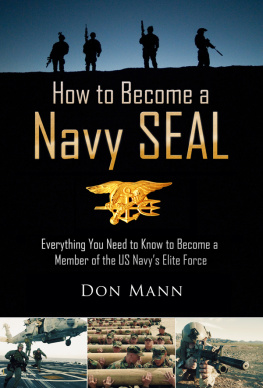
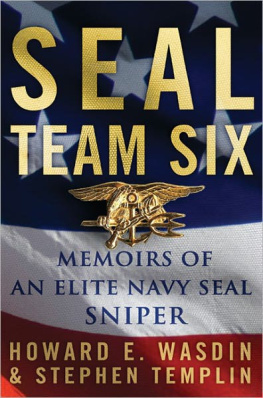

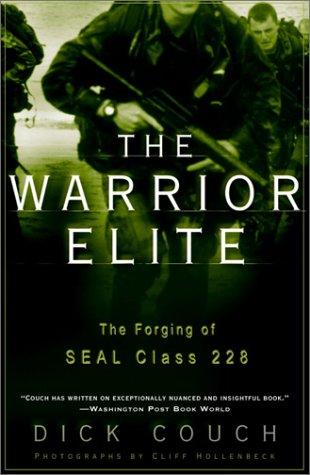



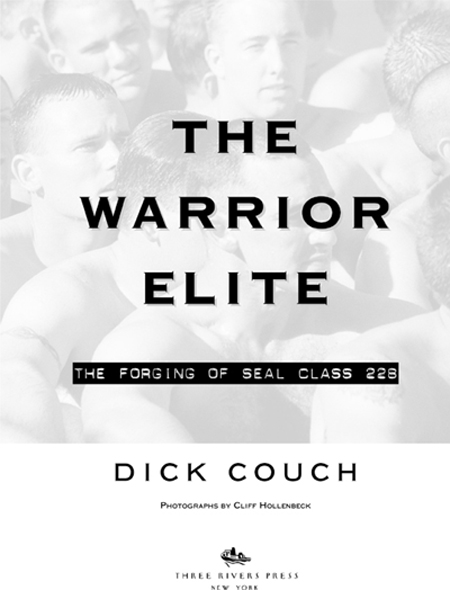

 he focus of this book is the training of Navy SEALs, America's elite maritime warriors. This work is based on my interviews with Basic UDT/SEAL (BUD/S) trainees, BUD/S instructors, students and instructors in various advanced SEAL training programs, and SEALs preparing for operational deployment. With two exceptions, the names have not been changed; the men you will meet in The Warrior Elite are Navy SEALs, SEAL trainees, and SEAL training cadres. I was given full and unlimited access to the BUD/S and advanced training venues, and could speak freely with trainees and trainers alike. My only restriction was that I respect classified information and organizations. As a retired naval officer who held a top-secret clearance, I could not do otherwise. SEAL training and the forging of warriors is a dynamic business. Because SEALs continually try to find better ways to do things, SEAL training is a work in progress. The Warrior Elite represents SEAL training at BUD/S and in the teams during the fall of 1999 and early 2000.
he focus of this book is the training of Navy SEALs, America's elite maritime warriors. This work is based on my interviews with Basic UDT/SEAL (BUD/S) trainees, BUD/S instructors, students and instructors in various advanced SEAL training programs, and SEALs preparing for operational deployment. With two exceptions, the names have not been changed; the men you will meet in The Warrior Elite are Navy SEALs, SEAL trainees, and SEAL training cadres. I was given full and unlimited access to the BUD/S and advanced training venues, and could speak freely with trainees and trainers alike. My only restriction was that I respect classified information and organizations. As a retired naval officer who held a top-secret clearance, I could not do otherwise. SEAL training and the forging of warriors is a dynamic business. Because SEALs continually try to find better ways to do things, SEAL training is a work in progress. The Warrior Elite represents SEAL training at BUD/S and in the teams during the fall of 1999 and early 2000.


 ach year, U.S. military boot camps turn out tens of thousands of soldiers, sailors, and airmen. The Marine Corps builds about 20,000 new marines each year for their 174,000-man Force, and they do this remarkably well in only eleven weeks. In the U.S. Army special operations community, the ultimate gut check is Ranger School. This eight-week ordeal teaches young soldiers that they can fight and lead, even when they haven't eaten or slept for several days. The Army awards about 1,500 Ranger Tabs each year to these graduates. Ranger School is tough; a few graduates of Basic Underwater Demolition/SEAL training, or BUD/S, attend Ranger School each year to learn what the Army teaches. BUD/S, however, remains at the core of making a Navy SEALa sea-air-land commando.
ach year, U.S. military boot camps turn out tens of thousands of soldiers, sailors, and airmen. The Marine Corps builds about 20,000 new marines each year for their 174,000-man Force, and they do this remarkably well in only eleven weeks. In the U.S. Army special operations community, the ultimate gut check is Ranger School. This eight-week ordeal teaches young soldiers that they can fight and lead, even when they haven't eaten or slept for several days. The Army awards about 1,500 Ranger Tabs each year to these graduates. Ranger School is tough; a few graduates of Basic Underwater Demolition/SEAL training, or BUD/S, attend Ranger School each year to learn what the Army teaches. BUD/S, however, remains at the core of making a Navy SEALa sea-air-land commando.